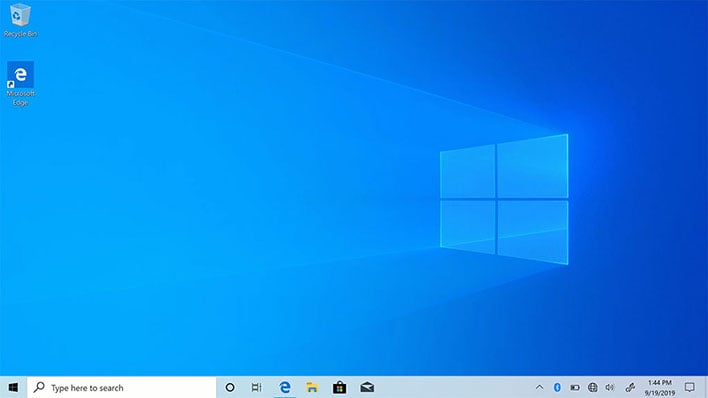Microsoft Readies Lightweight Windows 10 Build 21H1 With Remote Work, Security Updates

Microsoft appears to be taking a more conservative and focused approach to its bi-annual feature updates to Windows 10. As such, the first one for 2021—Windows 10 version 21H1—is not overflowing with features (and potential problems), and instead is geared towards improving the experience for those who work remotely.
It is a logical decision, for a couple of reasons. For one, some of Microsoft bigger feature updates in the past have stumbled out of the gate. In particularl, the October 2018 Update stands out as a train wreck among the bunch, though more recent ones had their share of annoying issues as well, for some users. For example, the May 2020 Update initially caused a myriad of problems on some PCs, from breaking OneDrive to slowing systems to a crawl.
Sometimes the issues get overblown, as not everyone is affected by the bugs that slip through. In any event, Windows 10 version 21H1 seems to be smaller in scope, with features designed to improve security, remote access, and the overall quality of Windows.
Among those is multi-camera support for Windows Hello. If you are rocking a Windows 10 system with more than one camera, the external camera will be selected as the default for Windows Hello. Some devices ship with two cameras already, though this will make it easier for people who want to bypass the built-in webcam for a higher quality external model, with Windows Hello support. For some, quality is paramount right now, because working and educating from home has become the norm over the past year.
Multi-camera support is one of just three notable bullet points this round, at least for now (the full feature set is not yet known). The other two include...
- Windows Defender Application Guard performance improvements including optimizing document opening scenario times.
- Windows Management Instrumentation (WMI) Group Policy Service (GPSVC) updating performance improvement to support remote work scenarios.
The second one is mainly of interest to system administrators, and not your typical home consumer. All in all, this is a fairly minor update in the grand scheme of things, with these being the highlights. And partially because of that, it should install rather quickly on certain systems.
Microsoft will begin updating Windows 10 PCs to version 21H1 in the first half of this year on a usual staggered basis, and anticipates having doled it out to all Windows 10 systems within 18 months of servicing.

